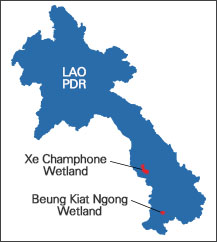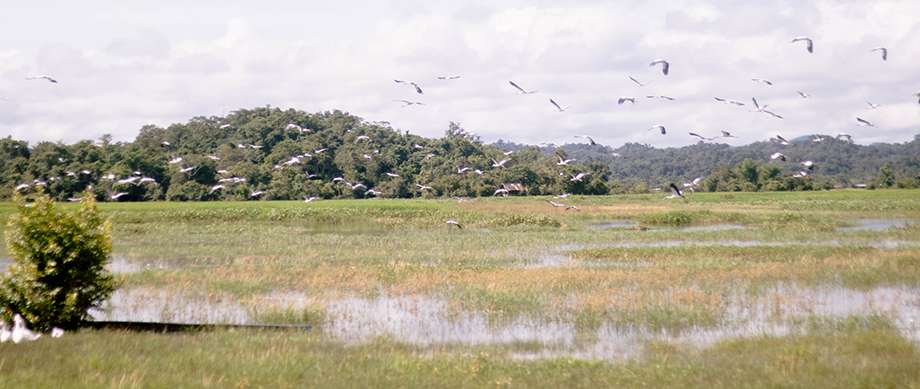Overview

Freshwater wetlands are vital for human survival. They are among the world’s most productive environments and the world’s most threatened natural habitats; cradles of biological diversity that provide the water and productivity upon which countless local communities and species of plants and animals depend for survival. Lao PDR is intimately associated with one of the world’s major wetlands with the Mekong River system. The Mekong basin covers 88% of the country. The functions and values of wetlands in Laos are significant and are also of critical importance to the livelihoods of local communities.
The Convention on Wetlands, called the Ramsar Convention, is an intergovernmental treaty that provides the framework for national action and international cooperation for the conservation and wise use of wetlands and their resources.
September 2010, Lao PDR joined the Ramsar Convention as the 160th Contracting Party. Two wetlands were designated of international importance:
Greater Xe Champhone Wetland - Savannakhet Province
Ramsar area: 12,400 ha
Wetland landscape: 66,800 ha
Wetland type: perennial and seasonal river channels, freshwater marsh, peatlands, swamp forest, lake, ponds, reservoirs, seasonally flooded woodlands, and rice fields
Fauna: Siamese crocodile, fish (200+ species), turtles, waterbirds and amphibians
Values & biodiversity conservation: wildlife corridors, fish migration, fish breeding, provides a flood buffering function and a source of fish, surface water and groundwater supply for human and economic use
Conservation status: local community regulations made (customary law), wetland reserves and fish conservation zones (FCZ) established (under village and district law)
Land use: agriculture, horticulture, capture fisheries, aquaculture, livestock grazing, NTFP, and part conversion of wetland into reservoirs, settlement and salt production
Hydrological values: flood retention, flood water storage, groundwater recharge and maintenance of dry season flows and buffer in flood period
Beung Kiat Ngong Wetland - Champassak Province
Ramsar area: 2,360 ha
Wetland landscape: 19,160 ha
Wetland type: rivers, freshwater lakes and ponds, freshwater marsh, peatlands and seasonally flooded grasslands, and rice fields
Fauna: elephants, fish (68 species), turtles, waterbirds, amphibians
Values & biodiversity conservation: wildlife habitats, fish migration, fish breeding, local communities highly dependent on natural resources (fish and water resources)
Conservation status: part of the Xe Pian National Protected Area, fish conservation zones (FCZ) (under village and district law)
Land use: agriculture, horticulture, grazing, fishing and settlement
Hydrological values: surface / water storage, groundwater recharge and maintenance of dry season flows and buffer in flood period

